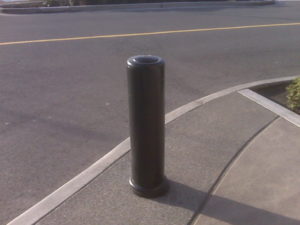 Vehicle-Ramming Attacks: Personal Safety and Situational Awareness
Vehicle-Ramming Attacks: Personal Safety and Situational Awareness
Given how distracted drivers can be, I always stand back from the edge of the curb, knowing a car could accidentally lurch onto the sidewalk and run me down.
Unfortunately, this is sometimes done on purpose, in what have become known as “vehicle-ramming attacks” – which is now being seen in the United States and Canada, as well as abroad.
So what can we do? Be Proactive versus Reactive.
Situational awareness is imperative, but remember, there’s no point in living in a state of constant fear over these very low-probability events. You are far better off staying relaxed, yet observant, as you go about your business, with some knowledge of what to be aware of, and what you would do if an attack took place.
Walk Facing Traffic. If you walk facing traffic, you can see vehicles coming toward you – and gives you more time to maneuver if you need to. This also makes it harder for a car or van to run over you, or pull alongside you to attempt an abduction.
Understand Your Environment. For the most part, vehicle-ramming attacks are carried out where there are lots of people, AKA a “target-rich environment,” to do the most damage. Therefore, if a vehicle-ramming happens at a concert or farmers’ market, etc., be ready to move away from the most crowded areas, which perpetrators would be drawn to.
Take Note of Protective Structures. Regardless of where you are, ask yourself: If a vehicle-ramming were to occur here, where could I take cover? What structures are nearby to provide protection? This could be a pillar, a tree, heavy planter boxes, or even just stepping into a store, lobby, or alcove.
Understand, too, that improved security and protective design have been implemented especially since the attacks on September 11. Many buildings have bollards, as seen in the photo above, to prevent vehicles from ramming their lobbies or being parked close to a building with explosives on board. Take notice of these, as well as large concrete blocks and footers placed for the same reason.
A car is not good cover. Taking cover between or behind or in front of a vehicle will not always protect you. A larger ramming vehicle can easily push a car over you or smash it into you. Also, beware of taking cover that could leave you trapped, like alleys that have dead ends or other enclosed spaces.
If there is still time, open distance.
It is always best to get as far away as possible, in case the situation includes an explosive device or an armed driver and accomplice. Alert others, but do not let indecisive people slow you down.
Special Senses: As you go about your day, keep an ear and eye out. It is counter-intuitive to hear or see a vehicle speeding up in an area where all the others are slowing down.
In vehicle-ramming attacks, larger trucks or machinery are often rented for their size and ability to do damage, and the driver may not necessarily be familiar with operating them. This can result in vehicles being driven poorly or bumping into parked cars. If you hear a series of impact sounds growing progressively louder, this could be that vehicle heading toward you, as it scrapes past parked cars and other structures.
However, having said this, keep in mind this sort of attack can very well involve an ordinary car, as we saw in Charlottesville terror attack of 2017. Don’t assume a fast-moving car is a police vehicle.
If you see a vehicle weaving and driving, including up onto the curb, again, seek cover.
If the incident turns out to be an accident or something non-malicious, then there is no harm in a false alarm.
Always trust your instincts. If you get a “bad vibe” about your environment, leave, move, or open distance. The military trains soldiers to be in tune with the “atmospherics” of their surroundings and to honor intuition. We should, too.
Final thoughts: Having your action plan for this rare “What if?” scenario in your back pocket does not make you paranoid. It means you are prepared.
Personal safety is key, and preparedness and awareness are two very intuitive, powerful, and protective tools.
Related: “Condition Yellow” The perfect state of situational awareness.

This review is very important & on topic. We all must remember best practice is being aware of your surroundings constantly & avoiding distractions such as cellphones & earbuds!
Indeed. Well stated. Distractions fracture all elements of personal safety.
Great Information to keep you aware
Thank you for keeping us all safe! This information is very important!